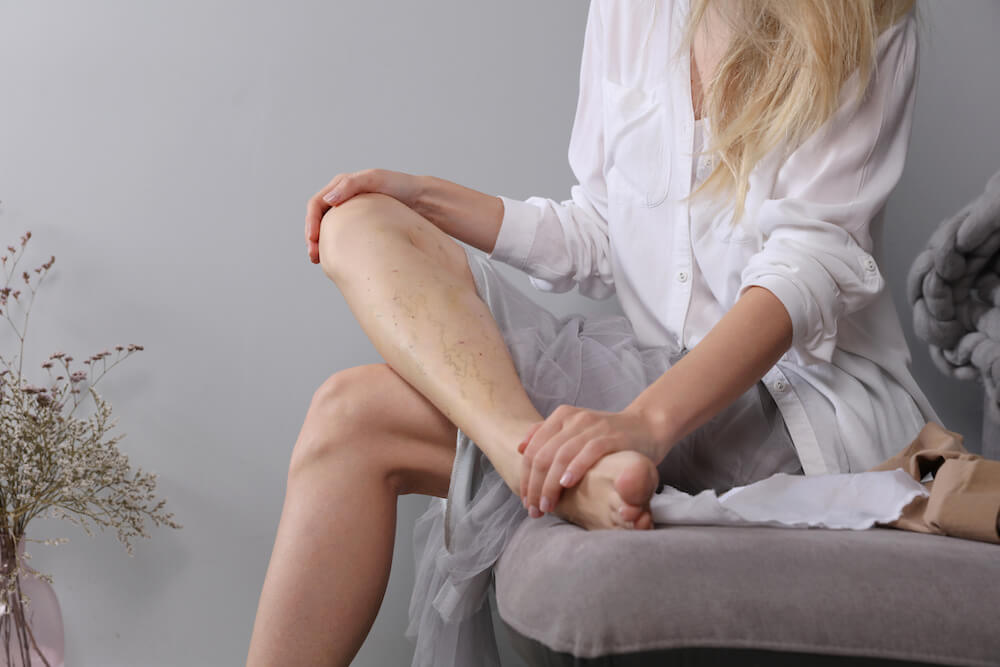Varicose veins are a common occurrence in both men and women, especially for those over 50. In fact, varicose veins are present in about 25 percent of adults. However, it can sometimes be difficult to tell whether you have varicose veins or if your veins are at a normal level of visibility. The best way to find out is to learn more about their visual characteristics and what causes them to occur in the first place. This will help you determine whether or not you might need some type of varicose vein treatment.
Varicose Veins: What Are They and What Causes Them?
Also known as varicosities or varicosis, varicose veins are dark-colored, enlarged veins that are visibly raised from the skin. They typically occur on the lower legs, ankles, and feet and appear dark red, dark blue, or dark purple in color.
Veins contain valves that keep the blood flowing toward the heart and from retreating backward. A healthy circulatory system is required for your veins to be able to fight gravity and send blood back upward to the heart. Therefore, when your vein’s valves begin to weaken and eventually fail, the blood in your lower extremities is unable to travel the distance back up to your heart, causing it to become stuck in your veins and thus causing varicose veins. The more blood that’s unable to travel away, the more engorged and visible your varicose veins become.
The development of varicose veins can often be linked to conditions like obesity, menopause, pregnancy, and even age, with most people who develop varicose veins being over the age of 50. Working a job that keeps you on your feet for long periods of time can also lead to varicose veins; plus, if other members of your family have them, you may simply have a genetic predisposition.
Common Symptoms and Varicose Veins Treatment
In some cases, the only symptom of varicose veins is the visible veins themselves, which can negatively affect self-confidence in some. However, many people with varicose veins also experience pain, achiness, and swelling in their lower legs. In some severe cases, the veins will become too engorged and begin to leak into the surrounding tissue, causing discoloration and ulcers.
Seeking varicose vein treatment typically stems from hoping to improve your overall health. However, there are many options for cosmetic procedures that can also improve your varicose veins’ appearance. Some of the most common types of varicose vein treatments include:
Increasing exercise. Getting your blood pumping is great for your circulatory system, which can help to lower the pressure on your varicose veins and reduce their appearance.
Avoiding excessive standing. Though moving regularly is important, being on your feet for hours can cause pain in your lower legs and swelling around the veins.
Manage your weight. A high body weight can put additional pressure on varicose veins, making it more painful to stand for long periods.
Surgery or minimally invasive treatments. Talk to your doctor about whether vein ligation may be the best course of action for your varicose vein treatment.
Contact NY Metro Vein Today
Are you interested in reducing the appearance of your varicose veins and finally being pain-free? Call Metropolitan Vein & Aesthetic Center today.


